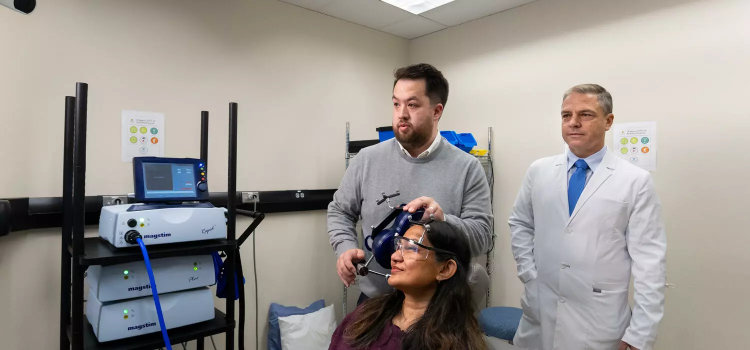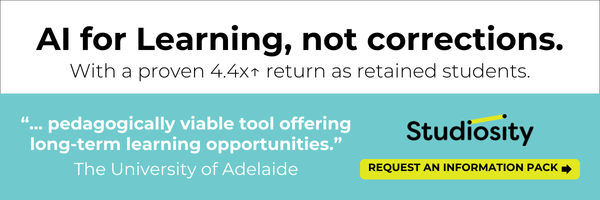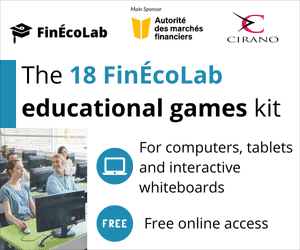Lucy Mulloor woke up one morning and realized something was terribly wrong. The 45-year-old single-mom could hear her two daughters in the kitchen but couldn't call out to them. She'd lost the ability to talk and to move the right side of her body. Mulloor managed to work her way to the side of the bed and drop onto the floor to attract the girls' attention. The oldest called 911. Mulloor would soon learn she'd experienced a massive stroke in the night and would spend the next five-months in hospital.

"Hearing I'd had a stroke was a complete shock," says Mulloor. "At that time, I was hiking and going to yoga and Zumba regularly. My blood pressure and blood sugar levels were in the healthy range."
Mulloor now lives with aphasia because of the stroke, a condition that affects her ability to formulate words, and string words together to make sentences. In hopes of improving her speech, she signed up for a research study led by Dr. Sean Dukelow, MD, PhD, at the University of Calgary. Dukelow was investigating whether transcranial magnetic stimulation (TMS) combined with intensive speech therapy could improve recovery from poststroke aphasia.
"We are very excited by the promising results of this non-invasive therapy as a complimentary treatment to speech and language therapy to help people recover words and communicate effectively poststroke," says Dukelow, a professor at the Cumming School of Medicine (CSM) and principal investigator on study. "We intentionally recruited participants who were a minimum of six-months poststroke because there's very little data on whether the brain can continue to recover and repair itself to make improvements in speech. Our findings show it can."
Mulloor was one of 44 people in the double-blind sham-controlled randomized trial. Participants were separated into two groups. Both groups received two weeks of intensive speech therapy, however, only one group received TMS. Members of the second group thought they were getting TMS, but the machine was not actively stimulating their brain (sham).
Following the stimulation (or sham) intensive speech therapy involved more than three hours of repetitive drills based on multimodality aphasia therapy (M-MAT), which could include reading, writing and drawing along with speech tasks. Shannan Love, R.SLP, was the lead speech-language pathologist working with the participants.
"Based on how well someone was completing the drills, I would think, oh, wow, they received the stimulation, but because the study was double-blinded, we didn't know," says Love, senior research associate. "Overall, we saw a lot of people making functional gains, which was incredible to see. I think the results are very encouraging for people who experience aphasia after a stroke."
Love says there were gains beyond the ones measured in the study. Participants reported improvements in their confidence, and mood and some noticed more movement in their arm and hand.
The first author of the study says one of the most encouraging things is that all the participants showed some level of speech improvement.
"We also saw speech improvements in the group that did not receive the stimulation. In that group the gain was modest but evident, in the rTMS group the gains were significant," says Trevor Low, MD/PhD student in CSM's Leaders in Medicine program class of 2027. "It's really incredible to see that the brain is still capable of rewiring itself long after stroke. Many of our participants had their stroke several years ago."
Mulloor was three years post-stroke when she signed up for the study. She says she's experienced a significant, and positive change in her ability to recall words and speak with confidence after participating in the study. The researchers have confirmed she received the TMS therapy.
Findings are published in Neurology.
The team is planning to publish additional findings from the study. The researchers conducted extensive brain imaging of the participants and will be sharing results of the changes they saw in brain circuitry.
Sean Dukelow is an associate professor in the Department of Clinical Neurosciences at the Cumming School of Medicine (CSM). He is a member of the Hotchkiss Brain Institute, the Libin Cardiovascular Institute, the McCaig Institute for Bone and Joint Health and a lead of the RESTORE Network at the CSM.













